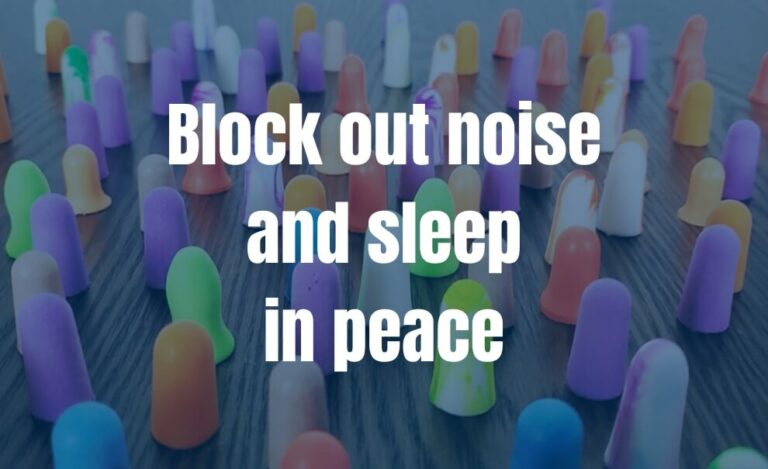
It’s not easy being human. I often tell people this when I want to remind them that it’s okay to be angry, stressed, anxious, upset, worried, or just in a stinking mood sometimes.
I believe the original phrase is ‘it’s okay to be human’, which I’ll also use when appropriate (humor and bad moods don’t always mix well). The more lighthearted version usually does a good job of squeezing a smile out of the darkness though, which is sometimes all that’s needed.
The thing is, when we carry stress, anxiety, or worry to bed with us, it often results in another very human problem: not falling asleep when we really, really need to.
Of course, there are many possible explanations for bad sleep, and we’re all different. One thing that seems to unite many of us though is that it’s difficult to fall asleep if you don’t feel relaxed.
In this article, I’ll be covering different relaxation techniques that you can try if you regularly can’t sleep because your mind is racing. There’s no rule about when to do them, so feel free to try them just before you go to bed, during the daytime if you’re feeling stressed, or even while you’re already lying in bed if you can’t sleep.
I’ll also describe the relatively short and easy relaxation routine I’ve put together over the years and now practice every day. I find it very calming and positive to do before going to bed.
More than one way to relax
I know not everyone finds the idea of meditation or yoga appealing, so I’ll also suggest some other techniques that might have less of an esoteric connotation for you.
However, if you haven’t given meditation, breathing techniques, or yoga a go because you feel that they belong in some overly colorful New Age realm of wind chimes and incense, I can assure you that people of all walks of life practice them, myself included.
A lot of what was once New Age is fairly mainstream now. You just need to take note of how often people carry yoga mats into coffee shops to see what I mean.
I don’t think there’s one single technique that’s better than all the others when it comes to sleep. So if going for a walk helps you unwind more than sitting cross legged with your eyes closed, that’s all that matters.
I’d just like to suggest keeping an open mind and trying out different techniques. You’ve got nothing to lose, and you don’t need candles, incense, or gong-filled music to meditate if it’s not your thing.
1. Guided meditation
If you’re new to the idea of meditation, a good place to start is with a guided meditation. That way, you don’t need to read a book or website, or attend a workshop. You can just press play, close your eyes and let a calm voice take you on a journey to a calmer state of mind.
There are many different styles, so it’s worth exploring YouTube, Spotify, or downloadable apps to see what works well for you.
Some will incorporate techniques such as mindfulness, with concepts like not being stressed about the fact that you’re having normal thoughts. Others might take you on more of a journey which can be a pleasant distraction from an overactive mind.
If I can’t sleep, I’ll sometimes listen to a meditation video or audio track through my phone. I leave it playing on the nightstand, close my eyes and listen to the calming instructions.
And if you have a relaxing bedtime routine that you like to repeat, it’s a good time to squeeze in a guided meditation.
If you search on YouTube for ‘guided sleep meditations’ you’ll find a wide range of styles, languages, and accents to pick from.
If YouTube isn’t your thing, just searching online will also bring up suggestions of websites where people post their own meditations you can try.
2. Progressive muscle relaxation
Progressive muscle relaxation is a simple technique that works well for several reasons:
- Tension in the muscles can lead to tension in the mind.
- Focusing on your body can help turn your attention away from your thoughts.
- By tensing and releasing your muscles, you learn what a relaxed state feels like. That gives you a goal to work towards when relaxing at night.
Step by step muscle relaxation
Here are some instructions for a classic progressive muscle relaxation technique. I recommend lying down to do this one, and I often do it when I’m in bed after I switch the light off.
- Breathe slowly and deeply in a natural way for a minute.
- Inhale slowly through your nose while tensing your toes and feet for three to four seconds (however long is comfortable for you).
- Slowly exhale through your mouth, and relax your toes and feet again.
- Take a deep breath and tighten your lower leg muscles, hold for a few seconds, and then relax again with the exhale of breath.
- Breathe in and tense your upper legs, hold, and then relax.
- Breathe in and tense your abdomen and lower back, hold for a few seconds and then relax.
- Repeat with your chest and upper back.
- Repeat with your hands, lower arms, then upper arms, shoulders, and neck.
- Tense your face, scrunching it up tightly.
- Finally, inhale and tense your whole body at once. Hold for a few seconds.
- Slowly exhale and relax your entire body, with a gentle sigh if you like.
- Repeat the full-body process three times.
3. Deep breathing exercises
Deep breathing is calming to do either on its own or along with other relaxation exercises. Many meditation exercises will encourage you to focus on your breathing at some point.
There are two main components to this style of breathing: learning to breathe into your abdomen rather than just the chest, and breathing at a controlled and slow rate.
It’s an effective relaxation technique for several reasons:
- It relaxes your muscles.
- It can help slow your heart rate down.
- It can help slow down your breathing if anxiety is affecting it.
- It takes your attention away from worrying thoughts.
- You can continue doing it for as long as you like in bed.
Step by step deep breathing
Here are some instructions for doing a deep breathing exercise. Again, it’s a good one to do while lying in bed, but you can do it any time you feel stressed or anxious during the day.
- Take a minute to get comfortable. Try to relax naturally.
- Close your eyes and focus your attention on your breathing
. Place one hand on your stomach and one on your chest. See if they both rise when you inhale, or if just one of them rises. You don’t need to do anything in particular at this time. Just see which hand is rising, and pay attention to it.- Inhale slowly through your nose for the count of four seconds. Try to breathe in such a way that the hand on your stomach rises, and the hand on your chest only rises a little. This is called abdominal breathing and what you should ideally try to do. You may find it tricky at first, but keep practicing and it will come in time.
- After you inhale, hold your breath for four seconds, and then exhale through your mouth for four seconds. If four seconds is too much or too little, you can adjust the time to suit you.
- Continue breathing in this way for five minutes.
- Once you’ve learned how to breathe with your abdomen, you can place your arms by your sides when you do the exercise.
- You could set yourself a goal to practice this deep breathing exercise for five to ten minutes, but there’s no time limit or ‘ideal’ length of time really. I sometimes just keep doing the exercise until I fall asleep.
Again, you can find many guided deep breathing exercises on YouTube and relaxation apps, sometimes combined with progressive muscle relaxation if you like the sound of both exercises.
4. A short routine if you have limited time (or patience)
Despite writing an article discussing meditation and relaxation techniques, I have a little secret: I find it difficult to sit still for long meditation sessions! I’m just an active and somewhat fidgety person.
I’m also not a huge fan of sitting cross-legged, and I’m pretty sure I’ve already missed the chance to become bendy enough for the lotus position during this lifetime.
So, after years of experimenting with relaxation exercises and mindfulness techniques, I decided to put together a routine that was short, positive, and effective.
What I like about it is that I can do all of these steps in just five to ten minutes, but they are enough to help me relax and go to bed feeling positive. I first started with just five minutes, and added an extra minute every two weeks. So now I tend to do ten, but if I’m really not feeling it, I stick to five.
Here’s what I do, and why:
Step 1
I usually lie on the floor or bed for the entire five minutes, but I tend to change positions a couple of times to stretch muscles that are tight. It also stops me from getting frustrated by being in one position the whole time.
Sometimes I hug my knees to my chest while lying on my back. I might also lie with my hips out, and my arms behind my head with my arms out – the splayed frog pose, as I like to call it.
So basically, I meditate and stretch out sore muscles at the same time. That seems to appease the active side of my personality which likes a good stretch.
Step 2
I first take a few slow and deep breaths through my nose, just to settle into the session. If you wonder why I keep insisting on breathing through the nose, look up the book ‘Breath’ by James Nestor. Basically, breathing through the nose is a good thing!
Step 3
I think of three things I’m grateful for today. It can be anything really: a delicious meal, the fact that I’m lucky enough to eat three meals a day, the beautiful blue sky and sunshine today, a phone call from a friend, remembering that someone loves me.
Step 4
I then tell myself in my head “The day is over. Let it go. Forget it.”
I feel this helps close the day nicely, and helps put to bed any regrets, worries, or anxiety about the day’s events.
Step 5
I practice some simple forgiveness. If I did something or said something I feel bad about that day, I forgive myself. Likewise, if someone did something that got under my skin, I forgive them.
If nothing happened of note that day, I think back to something in the past that I’m still harboring.
Just let it go.
It’s surprising how simply choosing to forgive yourself or someone else, or even the bad weather that day, can help you unwind.
If you’re the kind of person that finds it hard to forgive, aren’t ready to forgive someone that springs to mind, or feel that forgiveness requires more effort, don’t stress about this step. This is your time, remember. Maybe start small with forgiving the weather for raining on you or something else relatively superficial.
Step 6
I finish by doing some deep breathing. This time, with each exhale I imagine following the breath into the room, then the building, then the neighborhood, the city, country, world, and beyond.
If my imagination is struggling to visualise all of that on a particular day, just a few meters usually does the trick of getting me out of my head, thoughts, and worries.
And that’s my little routine. If you decide to give it a go, I’d love to know what you think of it in the comments below. Perhaps you might also like to get creative and put together your own positive relaxation routine, either based on my suggestions or ideas that you think are more personal and relevant to you.
5. Try some yoga or chi kung
I can’t describe yoga or chi kung techniques in a written article in a way that would do them justice, but I want to mention them because I believe they are both great for relaxation.
What I like about both is that they are relaxing for the body and the mind. Of course, there are some styles of yoga that can feel more like a workout than relaxation, which might be good for sleep too, but perhaps not right before going to bed.
I recommend going to a class in your local area if you can, not just for the proper instruction but also the social aspect. Humans are social creatures and it’s important we have good social contact with others. You might be surprised to discover how much having contact with others helps you feel more positive. And that in turn might help with your overall wellbeing and perhaps your sleep too.
If you can’t attend a class, once again YouTube is a great place to get some instruction in your own home. For yoga, a channel I follow and really like is ‘Yoga With Adriene’. I like her style in general and I appreciate how she has specific videos for different needs.
There are some for relaxation in general, and many for particular body parts. I’ve had times when I can’t sleep because I’ve been in pain, and yoga has come to the rescue by helping me stretch out some sore muscles.
6. Other relaxation techniques
As promised at the start, here are some suggestions that don’t involve meditation or bending your body into unusual positions.
- Go for a walk outside, preferably in a green space or by water. I always find walking helps me clear my mind and relax. Even if I don’t ‘try’ to relax, I always come back from a walk feeling calmer than when I left.
- Read a book, magazine or comic. I prefer to avoid screens when I want to relax, and like the physical feel of a book.
- Have a relaxing drink. Avoid caffeine and sugary drinks late at night if you can. Herbal or decaf tea are good options.
- Have a warm shower or bath. Maybe light some candles in the bathroom if you can, and put some music or radio on. I’d avoid a hot bath just before bed though, especially in the summer.
- Put on some headphones, shut the world out, and listen to some relaxing music.
- Watch or read something funny. I usually advocate for switching off screens late at night. But if you’re in an especially bad mood or feeling down, it’s amazing how much a good comedy or some funny cat videos can lift your mood!
- Do some art. If you like to do art, maybe get your creative juices flowing in times of stress. You could keep a separate book to draw in next to the bed that you only use at bedtime.
- Journaling. Writing about your day, mood and life’s events can be cathartic. Getting it on paper might help your mind relax too.
7. Readers’ suggestions
Here are some ideas that readers have suggested. Feel free to add your own in the comments below.
- Get up for a while if you can’t sleep.
- Do yoga.
- Do stretching before bed.
- Don’t watch horror films before bed.
- If noise keeps you awake, don’t let it stress you out – find a way to stop it or reduce it.
- Try a sleep hypnosis recording.
- Try some aromatherapy before going to bed.
Finally, if you’d like some more ideas that can help with sleep, talk a look the sleep hygiene page which is full of tips and techniques for better sleep.





Thankyou for sharing your steps. Thankfulness and forgiveness is great keys to a good sleep and a good life that I already practice as a believer in God and Jesus. I will definitely add those other steps to my evening rituals!
You’re welcome Chris. I really do think those simple practices are great to do every day. They don’t take long, and just help to bring a little positivity into the day.
Great article! I learned a few things that I will use immediately. I tried CBT last year for my sleep maintenance insomnia but it didn’t seem to help. The problem may have been that, while my work commute and desired quitting time dictate that I get up at 0330, I still kept my 2100-0530 weekend/day off sleeping hours. So, I’m going to try the sleep schedule worksheet again but stick to the same wake up time throughout the week.
Sleep aids including hydroxyzine and trazodone are hit or miss, and melatonin doesn’t seem to help. I do all the things recommended for a good night’s sleep, but I rarely sleep more than six solid hours, then have a hard time falling back asleep. Five hours seems to be the norm. (I did sleep one night with our purring cat on my chest and slept better than usual, but that may have been because I was exhausted from consecutive bad nights. But, hmmmm, you never know 🤔
Anyway, if I learn to sleep solid again, I’ll let you know!
Best,
Will
Hi Will
Thanks, I’m very happy to hear you liked the article. I hope some of the suggestions do help, and it’s always good to hear from people again to see how they got on with any of my suggestions.
Regards
Ethan
Hello Ethan,
First of all I would truly thank you for sharing your ideas. Though I don’t know, I’m not sure if it’s going to work, as it’s been a long time that I’ve been spending sleepless nights. I’ve tried Meditation, mindfulness, sleep hypnosis, and a couple of more stuff.
I’ve not tried much of music things as I tried some brainwave generator music once that my professor suggested and it didn’t help.
But I really appreciate your kind efforts and for sharing this informative post.
Thanks,
Jenny
Hi Jenny
Thanks for your lovely comment! It’s always encouraging to read words like yours. It’s a shame those techniques haven’t worked for you. Even so, I’d stick with the meditation and mindfulness as they are great in so many ways!
Regards
Ethan
I have been having sleeping issues for the past year. I get very frustrated when I can’t fall asleep. I take melatonin but it doesn’t seem to help. This article provided lots of information and I am going to try some of these techniques to help me sleep tonight!
Hi Elena
Thanks for your comment. Melatonin doesn’t work well for everyone, so hopefully you’ll have more joy with the relaxation exercises!
Regards
Ethan
I cannot sleep with music of any kind, or whisper talking. It agitates me.
These new age things just do not grab me. Sorry
Hi there
I totally understand – not everyone will appreciate or find these kinds of techniques calming. Maybe I should put in a separate section for people who aren’t into techniques that might seem too new age!
Regards
Ethan